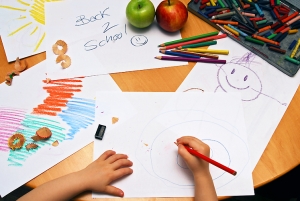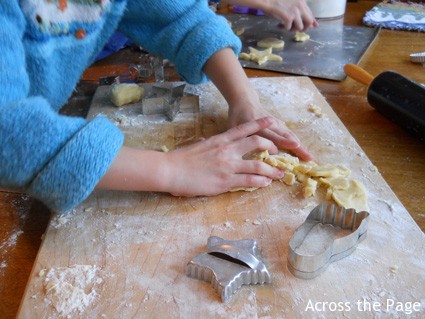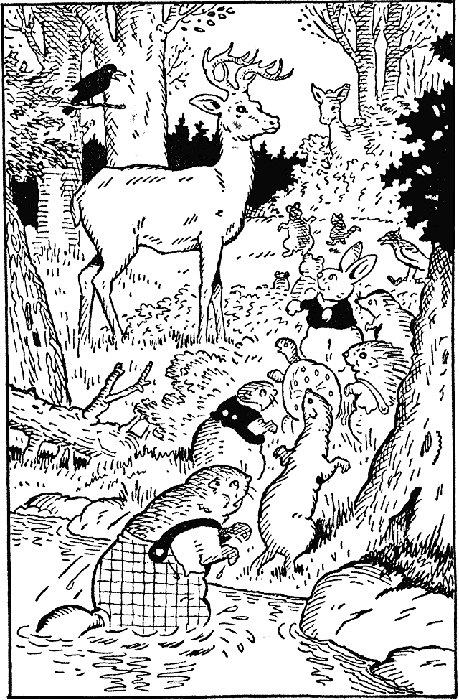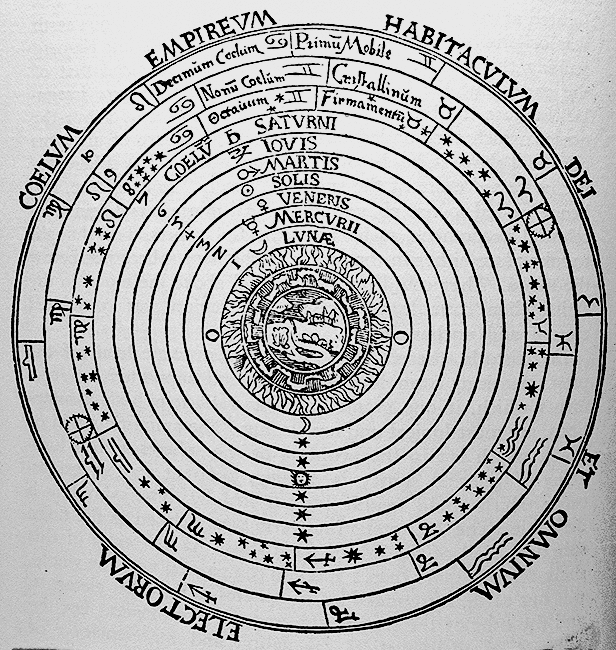Reading, Teaching, and Wondering
 My 6th grader has been following this reading list from The Well-Trained Mind. It corresponds to her history study this year — early moderns. A few of these have been abridgements or have been supplemented by audiobooks (as noted); it’s technically the 7th grade list, and I wasn’t sure she would have the wherewithall to wrestle through some of the more difficult books. She reads beyond her level with deep absorption if it’s a subject of interest, but not all of these books qualify that way (i.e. they aren’t about birds!).
My 6th grader has been following this reading list from The Well-Trained Mind. It corresponds to her history study this year — early moderns. A few of these have been abridgements or have been supplemented by audiobooks (as noted); it’s technically the 7th grade list, and I wasn’t sure she would have the wherewithall to wrestle through some of the more difficult books. She reads beyond her level with deep absorption if it’s a subject of interest, but not all of these books qualify that way (i.e. they aren’t about birds!).
So far we’ve had good success, budgeting around two weeks per work and coming out, on average, according to schedule:
- Don Quixote, retold by Michael Harrison.
- The Complete Fairy Tales of Charles Perrault, Charles Perrault et. al.
- “A Voyage to Lilliput” and “A Voyage to Brobdingnag” from Gulliver’s Travels, Jonathan Swift. (We were assisted by Librivox with this one! Listening was more manageable than wading through Swift’s narrative.)
- Pilgrim’s Progress, John Bunyan (We read Pilgrim’s Progress : A Retelling by Gary D. Schmidt, and had mixed feelings about it. She preferred the Olver Hunkin abridgement we’d read a few years ago. She hasn’t read the original yet.)
- Robinson Crusoe, Daniel Defoe (In this we were assisted by an unabridged audiobook.)
- William Wordsworth’s Collected Poems (Dover Thrift edition)
- Samuel Taylor Coleridge’s “The Rime of the Ancient Mariner”
- “The Legend of Sleepy Hollow” and “Rip Van Winkle,” Washington Irving
- Robert Browning: “The Pied Piper of Hamelin”
- Grimm’s Fairy Tales, Jacob and Wilhelm Grimm
- “The Way to Wealth,” Benjamin Franklin. In Benjamin Franklin: The Autobiography and Other Writings
- Christina Rossetti: “Goblin Market,” “A Birthday,” “Sister Maude”, “No, Thank You, John”
- Alice in Wonderland, Lewis Carroll
- Pride and Prejudice, Jane Austen (In this, too, we were assisted by an unabridged audiobook.)
- The Adventures of Tom Sawyer, Mark Twain
- 20,000 Leagues Under the Sea, Jules Verne
- A Christmas Carol, Charles Dickens
- “The Lady of Shalott” and “The Charge of the Light Brigade,” Alfred Lord Tennyson; in any Tennyson collection
- “The Raven,” Edgar Allen Poe
- East O’ the Sun and West O’ the Moon : Fifty-Nine Norwegian Folk Tales, by Peter Christen Asbjrnsen
- Narrative of the Life of Frederick Douglass, an American Slave: Written by
Himself, Frederick Douglass
We’re currently around #13, Alice in Wonderland, though I’ve somehow managed to get out of sequence. We read Pride and Prejudice prior to this one, and we haven’t yet read Christina Rossetti (officially — though she did gobble up “Goblin Market” this week on her own).
Though we’ve “done it” so far, it’s been an uneven process from a teaching standpoint. Only now, just past mid-year, am I really thinking about what my instructional goals are in all of it. I wanted to pause and think about what is accomplished in following a reading regimen like this.
This is what I’m coming up with:
- There is value in engaging with these classics at a young age, so they are less intimidating later. This is something I’ve thought all along.
- Something I’m noticing lately, in connection with some discussion I’ve seen about “common core standards,” is the variety of genre in the list: fiction, poetry (several different forms), travelogue, autobiography, satire, fantasy (fairy tales and surreal nonsense), historical novels. Such a list requires numerous adjustments in perspective and judgement, and different kinds of mental effort. I’ve marveled over the intricacy of the inside of my piano over the last year, but the complexity of the human mind engaged in the act of reading is absolutely incredible to me when I think about it.
- There is value in simply doing the work of reading, and achieving a level of comprehension sufficient to write a summary.
- These works cast some light on the historical periods we are working through. They help to keep history honest. And they amount to a parallel timeline to the events of history — they are an imaginative timeline of sorts, a trail of breadcrumbs that shows us how the reflective artists of different periods sought to make sense of their times. It was chaotic to live through, but they forged meaning through literary creation.
Now, though, I also want to come down to earth and think about what I have not done very well. I have not been intentional about “teaching” these works. I have required summaries, I have discussed the books with her, and in some cases I have asked for more extensive writing assignments related to the reading. But I have acted like the main goal is simply to read the books, to take them to herself as seeds that will bear a harvest sometime, some way.

Which brings me to the real question I have in mind in this post: what is my role in all of this? To what extent am I the one responsible, at this stage, for pointing out, say, information about the works’ literary properties? I have been making more of an effort lately to seek out information on teaching some of these works to younger readers; this morning my 6th grader and I actually talked about surrealism, and looked at some interesting paintings by surrealist artists in an effort to think about what Lewis Carroll is doing in Alice in Wonderland. But I confess I’m still only half-hearted about the necessity of this (other than to make me feel like I’m doing a good job as a teacher. But that can be the bane of the teacher’s existence. Making ourselves feel like we’re doing a good job sometimes comes at the expense of other treasures our students might have found if they were left to themselves to work and struggle and organize their own constellations of meaning and significance.) I’m a classical educator with a not-entirely-suppressed inner unschooler, it seems.
What do you think, Gentle Reader — surely you are a gentle reader, if you’ve made it this far in this rambling, circular post. What is the most important thing a reading list of this kind accomplishes for a 6th grader? And how much of the energy should be supplied by the teacher in the process?




10 Comments
GretchenJoanna
My advice: Listen to your Inner Unschooler! I feel very bold in saying that – but your 4 points listing what is accomplished by the reading plan itself remind me of all that is available to children “left to themselves” as you put it. Your child obviously isn’t completely left to herself, because she’s being raised by a mother who is also a lover of books and reading and learning. A great deal seeps from a person like you into the atmosphere, almost, to be absorbed by a child.
I don’t think there is one recipe for how much the teacher should supply in the educational process. It certainly depends on the child and the parent, their personalities and gifts – and you have already supplied quite a lot just in choosing the books. You are half-hearted about getting more teachy because you are wholehearted about the interaction that is happening between your student and the works themselves, and with the teacher-authors themselves.
As I began to read the post and the list of books I had such a longing to go back and be a child whose teachers might have given me such a list. Books I might have taken to myself “as seeds that would bear a harvest” in the future. I love that thought. And I love that you asked for your readers’ input, so that I could also ramble on the subject!
Polly
well, keep in mind this is me talking and it’s been a long time since I spent much time evaluating my method(a sort of personal application of Charlotte Mason’s method- with a largish dash of unschooling .) But, as for me, and especially at her age, I would just go with letting her read the books and hopefully delight in them. Narrations and/or discussions of course. Since this is your field of expertise you could throw a few terms around and define them and see if she’s drawn to go deeper with you and maybe she is :)
For me I feel most successful as a homeschool teacher when my kids say “Oh, I loved that book!” because I know even if they were young and didn’t get all there was there to grasp, there’s a good chance they’ll read it again sometime….
Actually you sound like a CM homeschooler to me :)
Heather Chrysler
Well first off, that reading list is impressive! You must love reading and discussing all those pieces of literature. You mentioned the new Common Core standards and exposing her to a variety of genres. The big push has been for students to read many more nonfiction texts as that will be most of what they will be encountering in their adult lives. I’m wondering–do you have her read any other forms of nonfiction texts such as procedural articles, pursuasive essays, newspaper ads, etc.? Does she write in a variety of genres? If so, is it directly connected to her reading? You asked about your role and I couldn’t help but put my two cents in. I’m a firm believer in discovery learning, however I feel that explicit instruction is just as important. It seems contradictory, but it doesn’t necessarily have to be. When children share their observations about texts and express their thinking, their learning is enhanced. They take on their own learning when they notice things themselves. However, I think it’s just as important to teach specific things, such as literary elements and such. I’m thinking she probably has pretty well developed comprehension but is she able to delve deeper and consider underlying themes, author’s viewpoints, life applications, etc? I feel reading instruction should definitely entail that scaffolded thinking to get kids to think beyond the text and about the text. So when you are considering what and how much energy the teacher should supply I would say a lot! However, I think it comes from planning and setting goals more so than a “flashcard approach.”
Janet
She does read a variety of other texts, both for school and for pleasure. This particular child’s comfort zone, in fact, is nonfiction — a gene she didn’t get from her mother. :-) This reading list is more of a history supplement than part of a language arts core. We use a writing curriculum that provides instruction in different types of writing assignments, but it is not linked as directly as I’d like to her other reading.
That’s a good question regarding her ability to engage deeper themes. This list has so many interesting thematic links between texts that it’s been kind of a natural thing to recognize them. I think the more someone reads, and the bigger their “internal library,” the more readily they engage the more subtle aspects of texts.
I see the common core push to increase the proportion of informational texts as unfortunate, for several reasons. It’s not true that everyone reads mostly informational texts in their adult lives, so it’s reductive to herd everyone into that category. But it seems to follow the general trend toward minimizing the humanities and reducing the field of knowledge to science, math and technology. It makes us poorer as a culture. Most of the meaning-making in our lives comes from the ability to comprehend our experience as part of a story, but we are more and more dismissive of the fields of inquiry that make for true literacy. I heard a phrase awhile back — “we are a culture of narrative deprivation.” It hangs with me because it seems to be such an accurate diagnosis.
None of which relates to the issue of how much I should insert myself in my daughter’s history reading! I appreciate all the insights here — thank you! It gives me much to ponder.
Heather Chrysler
I absolutely agree with you about the dangers (that may be too strong of a word) in dismissing traditional literature and replacing it with informational texts. Nonfiction reading requires a different approach and teachers should provide effective instruction on the text structure and characteristics so students will be able to successfully comprehend it. However, like you, I see the value in those other forms of literature and I do see a “narrative deprived” culture emerging. I think one of the best things you could do is engage her in rich discussions about her reading that provoke her to deeper inquiry. As you scaffold these conversations she will start to notice things herself and apply themes and author’s craft to other pieces of literature. I think it’s valuable to directly connect reading and writing because as you immerse yourself in a certain genre you begin to think and read like a writer and all the observations you make you can apply to your writing pieces to improve their quality.
This conversation is so up my alley! Sorry to keep replying!
Janet
Sorry!?? I love getting your thoughts on this, Heather!
I think we’re on a similar track. We do have discussions, and I usually have some goals in mind. In an individualized setting it might look a little different than in the classroom… just because the discussion can be initiated differently, by starting with her questions rather than with my plans. But I think we end up in the same place. (I like that idea of “scaffolding.”) I really don’t want to intrude on her direct experience of the text, and sometimes I have a hard time balancing that with offering input.
She has to write about her reading, but I’m not satisfied with our writing program this year. Mostly I’m making up the assignments related to her reading. I’d like to incorporate more free writing/journalling about it but I don’t have a good system in place yet.
Thanks for stopping by! I’ll look forward to opportunities to continue the discussion…
Heather Chrysler
One more thing…check out the engage ny website which discusses the common core but more specifically look at the 6 shifts. I think you’ll find it interesting if you haven’t heard about them already. I feel like it’s something every educator should know even if you don’t necessarily agree with them.
And yes yes yes she should open up the conversation with her experiences of reading the text. That is always my hope with my reading groups but I teach struggling readers so many times I do have to be very supportive of their thinking to get them to that deeper place. Student directed conversations are awesome and should absolutely be encouraged and valued. I still think they need guidance to further enrich their experience: thought provoking questions, etc.
Ok I’m done!!!!
Amy
Well, I’m not sure I’m at all qualified to offer any advice or share my opinion (if I really even had one!), but I lean a bit more toward the ” don’t get between the reader and the text” camp, especially for younger (pre highschool) students. I think some of the understanding is developmental more than anything else, and it just can’t be rushed.
Janet
Yes, there’s a limit to how much “literary analysis” is possible or helpful at this stage of the trivium!
It’s sometimes startling to me how much they take in instinctively, without needing to be shown. I think it’s partly from the immersion in language and reading that is stressed in CM and TWTM, and partly from keeping other more passive/deadening influences at bay till a later stage developmentally.
Alice@Supratentorial
“I’m a classical educator with a not-entirely-suppressed inner unschooler, it seems.”
Love that! Me too!